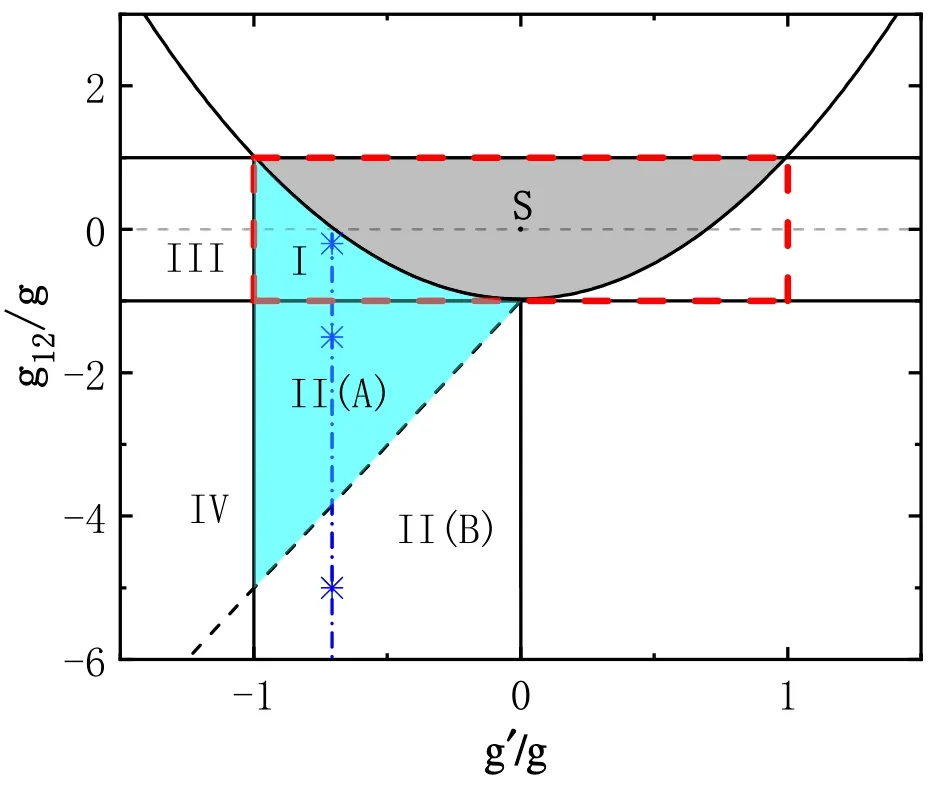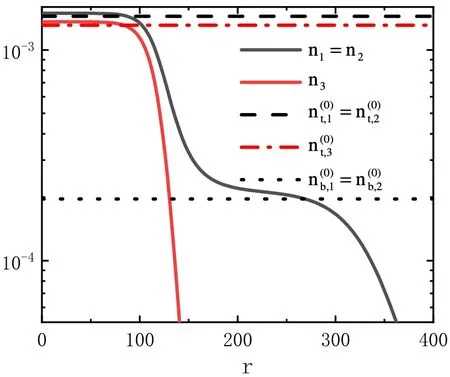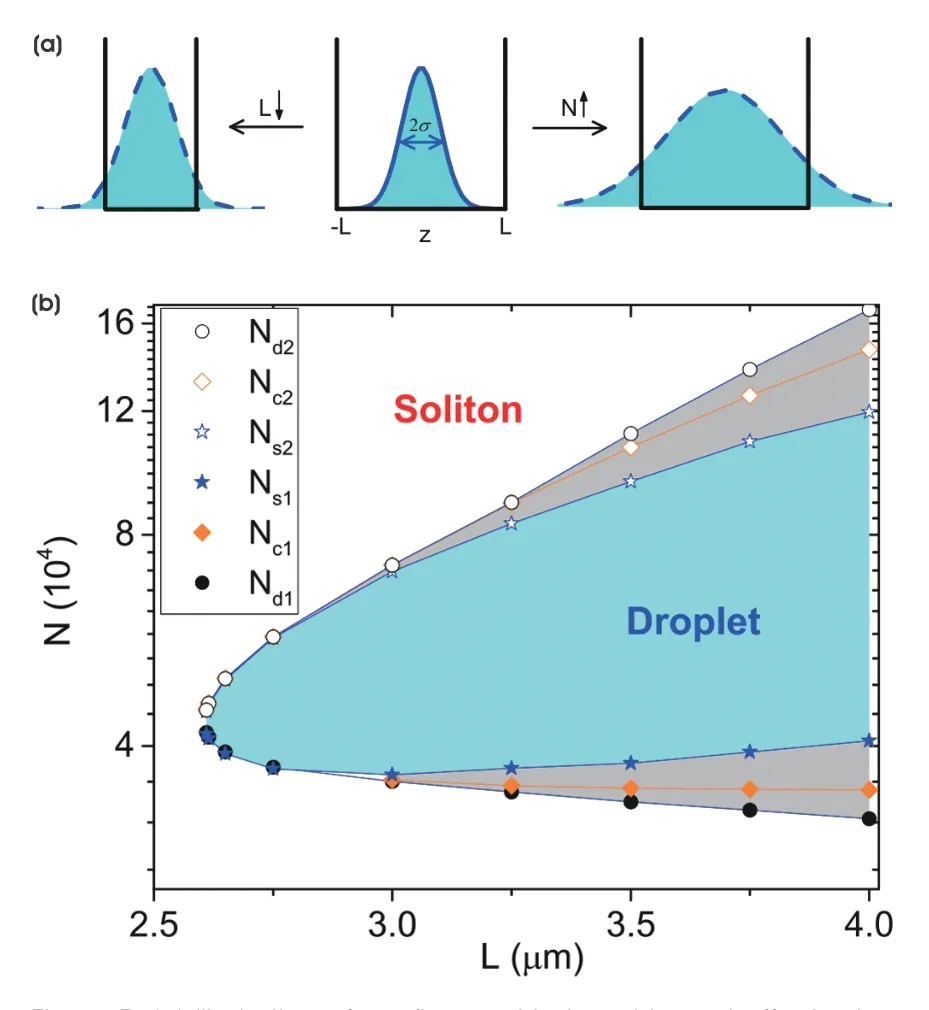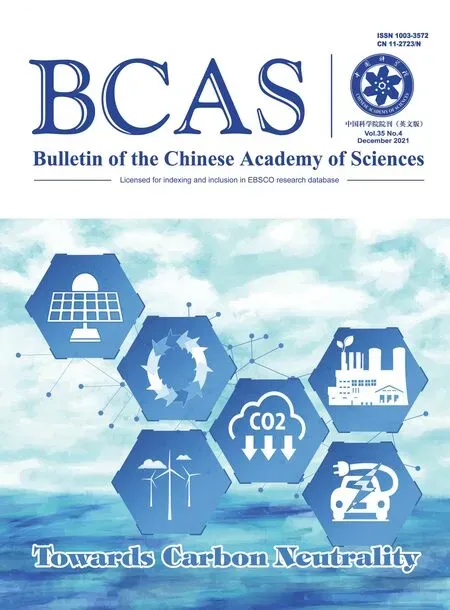Quantum Droplets with Borromean Correlation
Exploring dominant few-body correlations in many-body systems is one of the main tasks of modern physics, and the presence of exotic few-body bound states offers an efficient perspective to uncover the according few-body correlation in the many-body environment. The Borromean binding clearly falls in such a case, where only three subjects are bound together while any two of them are unbound, analogous to the structure of Borromean ring as shown in Figure 1. Typical examples of Borromean binding include the halo nuclei in11Li and6He, and the Efimov physics in the negative side of scattering length in ultracold atoms, both of which have been verified in experiments. Theoretical studies have also shown the Borromean trimer can be supported by fine-tuning the shape and strength of pairwise potential or by modifying the single-particle dispersion. Given the stringent requirement for its occurrence in small clusters, whether the Borromean binding can be extended to many-body systems due to collective effect is an interesting yet challenging problem. Addressing this problem will help bridge the collective many-body effect and the quantum few-body correlation, thereby offering a new route for tackling the complicated many-body problems in strongly correlated systems.

Figure 1: Borromean ring: only three rings can be linked together while any two of them are unlinked.
In the world of many-body physics, the droplets represent a typical many-body bound state that has been well studied in literature, such as the study in helium liquid from the 1980’s. Recently, the droplet phase has regained great attention in ultracold atoms, and has been successfully observed in dipolar gases and the alkali two-species boson mixtures. Typically, a droplet holds a negative energy and zero pressure, and thus can be self-bound and stay in equilibrium with the vacuum. Its mechanism lies in a critical balance between the mean-field attraction and the Lee-Huang-Yang repulsion from quantum fluctuations. Then, an interesting question here is, will the droplets remain stable under multi-component? And even further, can they support the intriguing Borromean binding?
Recently, Prof. CUI Xiaoling from the Institute of Physics (IOP), Chinese Academy of Sciences, together with postdoctoral researcher MA Yinfeng and PhD student PENG Cheng has investigated the stability of quantum droplets in three-component boson mixtures and examined the possibility of Borromean binding therein. By analyzing the mean-field stability of this system under density fluctuations, they find that the stability regime of three-component system is always larger than that of two-component subsystems (see Figure 2), which means that the former can undergo mean-field collapse more easily than the latter. Its physical origin lies in the enhanced attractive force mediated by the density fluctuation of the third component. Such additional force intensifies the meanfield collapse of the three-component system and facilitates the formation of quantum droplets after incorporating the repulsive force from Lee-Huang-Yang corrections. By definition, this confirms the existence of Borromean droplets, where only three-component bosons can form the self-bound state while any two components cannot. The researchers also identify the region of the Borromean droplets in the phase diagram, as shown in Figure 3. Moreover, another interesting phenomenon they find is that outside the Borromean region, the three-component and two-component droplets can coexist in the form of phase separation, as manifested by the wedding cake structure in their density profile, see Figure 4.

Figure 2: Mean-field stability diagram of three-component bosons. The gray area is the stable region, which is smaller than the stable region of two-component ones (surrounded by red dashed lines).

Figure 3: Phase diagram in the parameter plane of particle number and interaction strength. The blue area marks the region of Borromean droplet (BD). Below and above this region are, respectively, the gas phase and the droplet-coexistence phase.

Figure 4: Phase separation of three-component and two-component droplets.
These results have demonstrated that the threecomponent boson mixture can exhibit much richer physics than the two-component ones. This is the first study to extend the Borromean binding to the many-body world, and has shown the power of many-body collective effect in engineering bound states with a diversely fascinating structure. The work has been published recently in Phys. Rev. Lett. 127, 043002 (2021).

Figure 5: (a) Illustration of confinement-induced bound effect: when the particle number increased or the trap length reduced, the droplet can become unstable if its size is comparable to the trap length. (b) Phase diagram in the parameter plane of particle number and trap length. The blue and white areas mark, respectively, the droplet and soliton regions, and the gray area is the region when these two states can coexist with each other.
In addition, the same group has recently investigated the stability of quantum droplets under a uniform confinement. They showed that the confinement-induced boundary effect can be significant when increasing the atom number or reducing the confinement length, which destabilizes the quantum droplets towards the formation of a soliton bound state (see the phase diagram in Figure 5). This study has revealed the competition and coexistence of different bound states (droplet and soliton) in quasi-low-dimension, which can serve as a theoretical guide for detecting related phenomena in realistic experiments in the near future. The according work has recently been published as a Letter in Phys. Rev. Research 3, L012027 (2021).
These studies are supported by the National Key Research and Development Program of China (2016YFA0300603, 2018YFA0307600), the National Natural Science Foundation of China (No.12074419), and the Strategic Priority Research Program of the Chinese Academy of Sciences (No. XDB33000000).
Link: https://journals.aps.org/prl/abstract/10.1103/PhysRevLett.127.043002 https://journals.aps.org/prresearch/abstract/10.1103/PhysRevResearch.3.L012027(IOP)
 Bulletin of the Chinese Academy of Sciences2021年4期
Bulletin of the Chinese Academy of Sciences2021年4期
- Bulletin of the Chinese Academy of Sciences的其它文章
- Buoy-borne Underwater Dark Field Imaging System Improves Marine Plankton Monitoring Capability
- Scientists Innovate On-site in situ High-Pressure Ultrafast Pump-Probe Spectroscopy Instrument
- Scientists Capture Electron Transfer Image in Electrocatalysis Process
- Imaging Atomic Structure of Hybrid Perovskite CH3NH3PbI3
- Novel Fluorescent Hydrogel Developed to Achieve Soft Biomimetic Color-Changing Skins
- Decoding Human History with Ancient DNA
